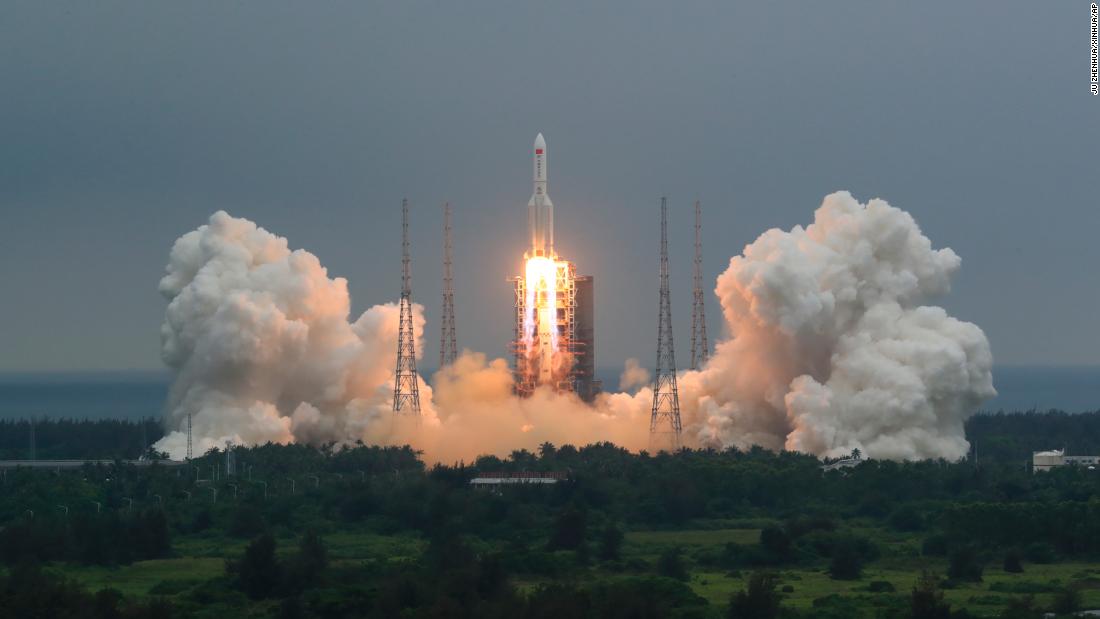Expectations for entry of Chinese rocket to Earth 0:41
(CNN) -
A large runaway Chinese rocket is set to reenter Earth's atmosphere this weekend and is causing concern before its debris hits somewhere on the planet.
The Long March 5B rocket, which is about 30 meters tall and weighs 22 tons, is expected to enter Earth's atmosphere "around May 8," according to a statement from Defense Department spokesman Mike Howard, who He said the US Space Command is tracking the trajectory of the rocket.
The US does not plan to shoot the Chinese rocket that will hit Earth
The rocket's "exact point of entry into Earth's atmosphere" cannot be located until a few hours after reentry, Howard said, but Space Control Squadron 18 provides daily updates on the rocket's location via the website. Space Track.
The good news is that falling debris toward Earth, while disconcerting, generally poses very little threat to personal safety.
“The risk of someone being hurt or hitting is quite small - not negligible, it could happen - but the risk of them hitting you is incredibly small.
So I wouldn't lose a second of sleep about whether this is a personal threat, "Jonathan McDowell, an astrophysicist at the Center for Astrophysics at Harvard University, told CNN this week.
advertising
The European Space Agency has predicted a "risk zone" that encompasses "any part of the Earth's surface between approximately 41.5 N and 41.5 S latitude", which includes virtually the entire American continent south of New York. , all of Africa and Australia, parts of Asia south of Japan and Europe, Spain, Portugal, Italy and Greece.
That enormous range is, in part, the result of the rocket's breakneck speed;
even slight changes in circumstances can dramatically change your trajectory.
“We hope it will come back in sometime between May 8-10.
And in that two-day period, I would go around the world 30 times, ”McDowell explained.
'The device is traveling at about 28,000 kilometers per hour.
So if you have an hour to guess when it goes down, you are more than 17,000 miles away to say where. "
Now the ocean remains the safest bet on where debris will fall, he said, just because it takes up most of the Earth's surface.
“If you want to bet where on Earth something is going to land, bet on the Pacific, because the Pacific is most of the Earth.
It's that simple, ”McDowell explained.
The rocket put a portion of the new Chinese space station into orbit on April 29, but was then allowed to rush through space uncontrollably until Earth's gravity began pulling it toward the ground.
International Space Station vs.
Chinese space station: here's what each one has
That approach is a departure from what McDowell calls "best practices" compared to what other space agencies do.
"Standards have been set," he said.
"There is no international law or rule, nothing specific, but the practice of countries around the world has been: 'Yes, for the largest rockets, let's not leave our garbage in orbit like this.'"
Despite recent efforts to better regulate and mitigate space debris, Earth's orbit is littered with hundreds of thousands of uncontrolled pieces of junk, most of which are smaller than 10 centimeters.
Objects are constantly falling out of orbit, although most of them burn up in Earth's atmosphere before they have a chance to impact the surface.
CNN's Jackie Wattles contributed to this report.





